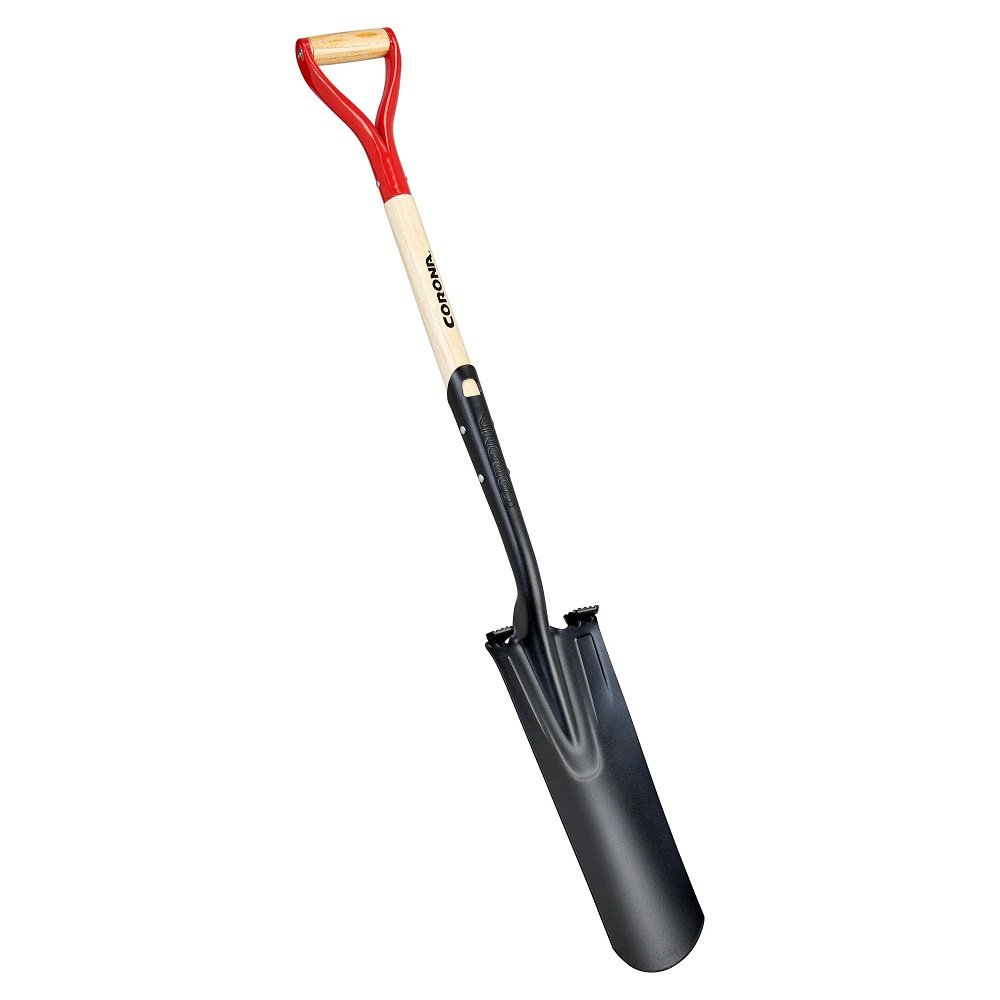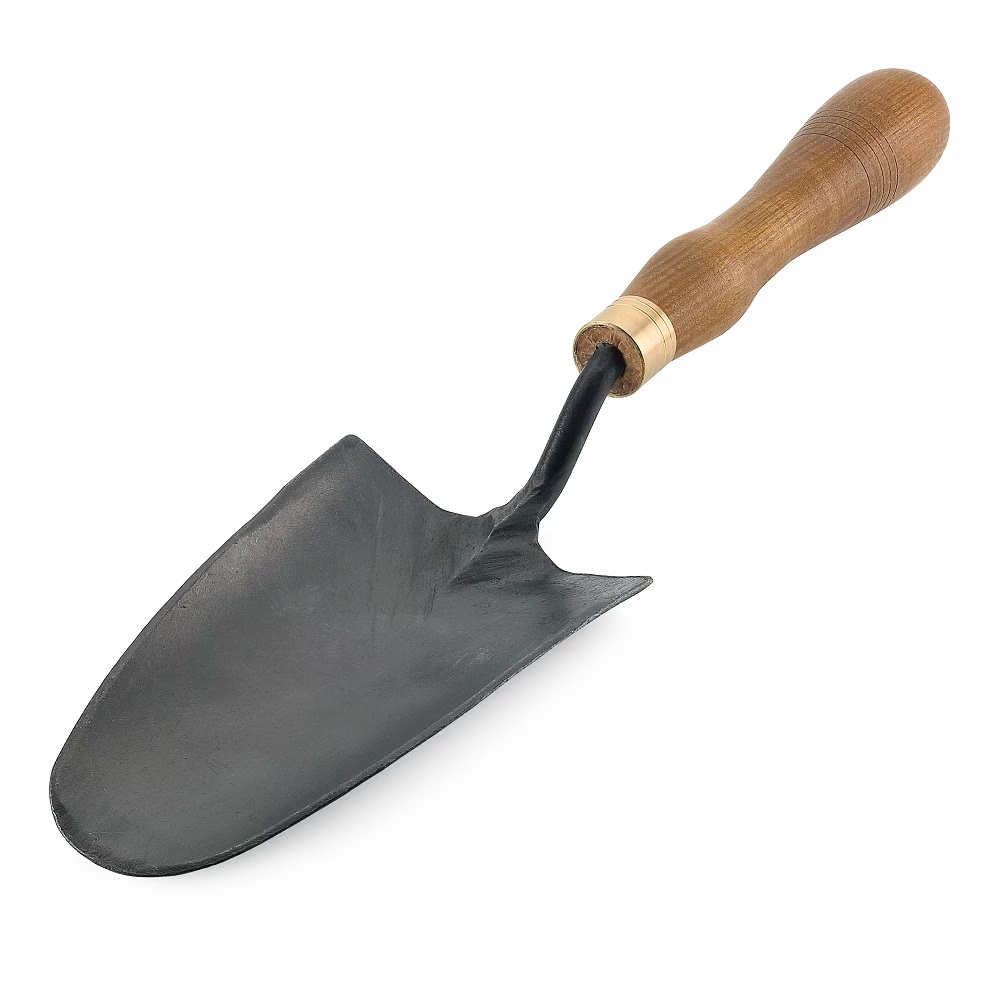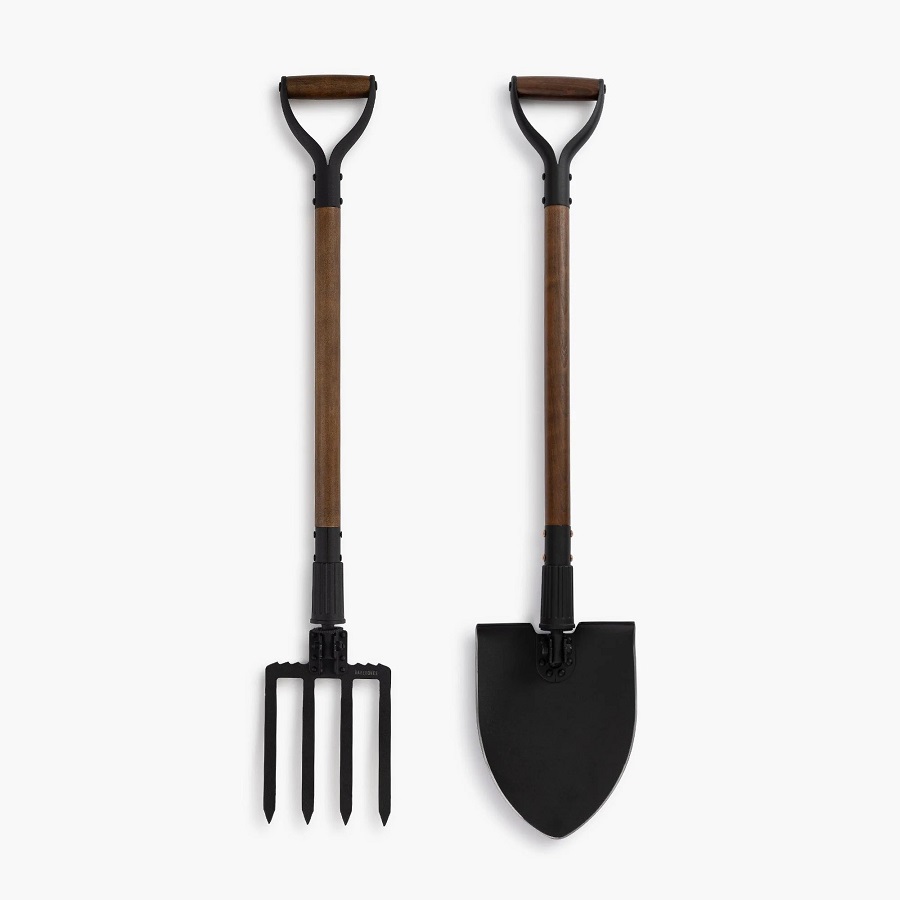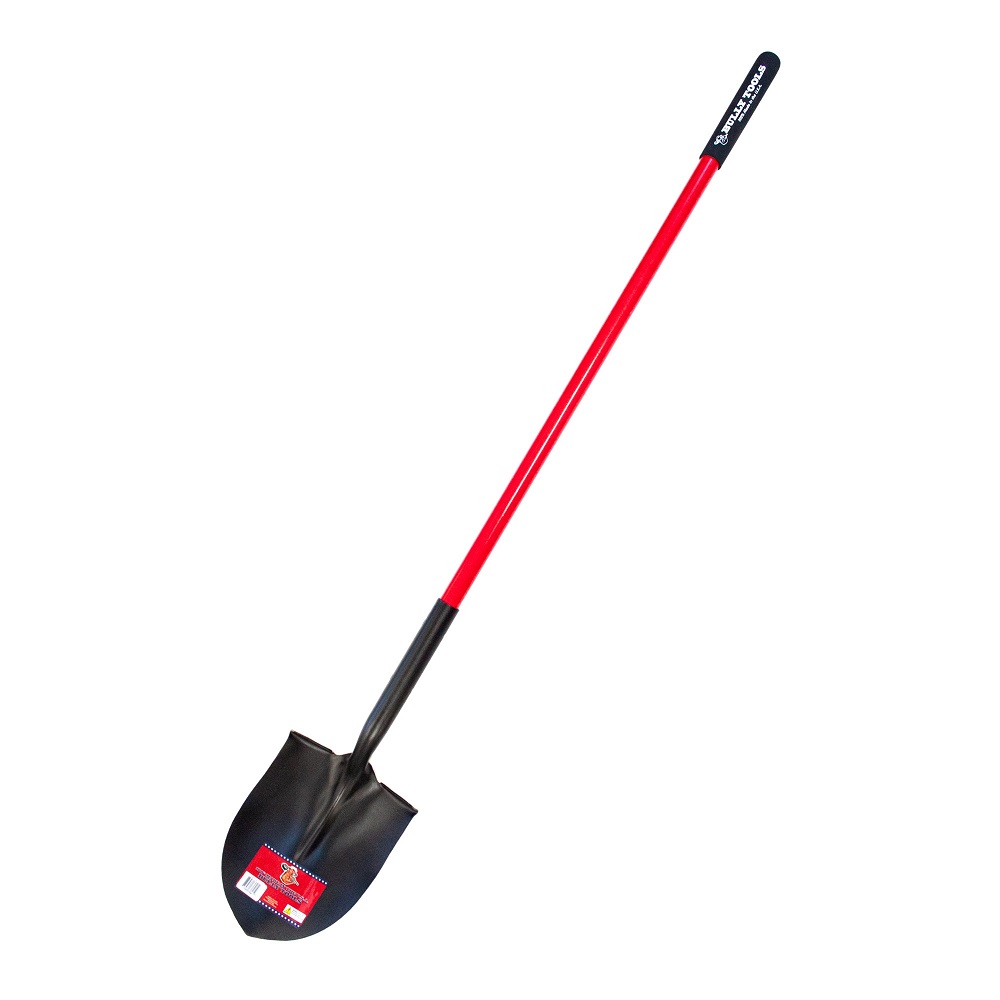Introduction to Shovels and Spades
When you embark on a task that requires digging or moving materials, the shovel or spade is your go-to tool. It’s essential to understand that while often used interchangeably, shovels and spades serve different purposes. The shovel is ideal for scooping and moving loose materials like soil, snow, or gravel. On the other hand, a spade is your instrument for creating straight-edged holes or trenches and neatly edging landscape elements such as flower beds. In North America, however, ‘shovel’ is a common term for both tools.
Choosing the right shovel or spade is crucial and involves several ergonomic considerations. The design of these tools has evolved, but not always with user comfort in mind. As you select a shovel or spade, think about weight, handle type, shaft length, and blade size and shape. These factors impact the tool’s efficiency and the strain it puts on your body. A well-selected tool can make the job easier, quicker, and reduce the risk of injury.
In the next sections, we’ll delve deeper into these considerations, ensuring you’re equipped with the knowledge to select the perfect shovel or spade for your task while maximizing your efficiency and safety.
Importance of Shovel Weight in Efficiency
Choosing a shovel with the right weight is vital for efficient digging and shovelling. A lighter shovel requires less muscle effort and can boost shovelling efficiency. This is important when you work over extended periods. Shovels typically weigh between 1.5 to 3 kg (3.3 lb to 6.6 lb). Consider the task at hand. For lighter materials like snow, opt for a shovel around 1.5 kg (3.3 lb). For heavy-duty jobs, like moving stones or coal, a sturdier shovel closer to 3 kg (6.6 lb) is more suitable.
The material of the shovel affects its weight. Steel shovels are durable but can be heavy. Aluminum ones are lighter and still quite strong. Plastic shovels are the lightest, ideal for snow or grain, but may not handle heavy loads well. Remember to balance shovel weight with material type for best results.
Too heavy a shovel leads to quick fatigue, reducing how much work you can do. It can also increase the risk of injury, particularly to your back. So, a shovel’s weight isn’t just about how much it physically weighs. It’s about how that weight impacts your work rate and safety. Lighter isn’t always better—it’s about the right weight for the job and your comfort.

Selecting the Right Handle Type and Shaft Length
Choosing the proper handle type and shaft length is key to shovelling effectiveness. Different tasks require different shovel designs for the best ergonomic fit. Let’s look at what to consider.
Handles come in various materials, each with their benefits. Fiberglass handles are light and strong, reducing strain. Wood handles offer a traditional feel but can be heavier. For summer use, a non-slip handle is best. It prevents losing grip when hands sweat.
Shaft length also impacts your comfort and efficiency. A longer shaft minimizes back bending, decreasing back strain. Shorter shafts provide more stability when lifting and moving materials. The ideal shovel length reaches to your elbow when standing and the blade is on the ground. For tasks like snow shoveling, bent shafts or additional mid-shaft handles may improve comfort. However, no studies specifically endorse these features despite some user preferences.
Select a handle and shaft that allows for a strong, light grip and minimizes back strain. Remember to balance the shaft length for stability and less bending. Choose a shovel that feels right for your height and the task at hand. The goal is to shovel efficiently without injury.
Analyzing Blade Size and Shape for Different Materials
Choosing the right blade size and shape is crucial for effective shovelling. Different materials require various blades for efficient work.
- Triangular or Round Blades: These are for loose materials like sand or dry earth. Their design helps to penetrate soft surfaces with ease.
- Square Blades: Best suited for heavy, granular substances such as gravel or coal. Their shape makes them perfect for scooping and lifting these materials.
A smaller blade size reduces the load’s weight, ideal for preventing strain and fatigue. Look for a blade with a ‘rolled step’ on the top for digging in harder soils. This allows you to apply foot pressure and reduce upper body strain.
Remember, the key is to match the blade to the material you’re moving. A well-suited shovel blade enhances your efficiency and minimizes physical effort.

Ergonomic Considerations for Shovelling Tasks
When you’re planning to tackle a shoveling task, it’s essential to consider how tool design impacts your body. Ergonomics plays a big part in avoiding strain and injury. Here are some ergonomic factors to keep in mind.
- Weight Distribution: A well-balanced shovel can reduce the amount of effort you put into each scoop. Make sure that your shovel isn’t too top-heavy or too light at the handle.
- Handle Grip: Your grip on the shovel affects your control and comfort. Look for handles with ergonomic designs that fit your hand well. Cushioned grips can also help reduce blisters and hand fatigue.
- Shaft Shape: Bent shafts or those with an additional handle are aimed at minimizing back bend. They may help some users reduce back pain, though personal preference varies.
- Blade Design: A blade with a footrest allows you to use your body weight to help drive the shovel into the ground. This helps take some of the load off your arms and back.
Remember, the right ergonomic features for your shoveling task can make a big difference. They can make the work easier and reduce the risk of injury. Always select a shovel that feels comfortable for the duration of your task and suits the material you’re working with.
Optimal Shoveling Techniques and Rates
To shovel efficiently, practice optimal techniques and abide by recommended rates. Effective shovelling minimizes fatigue and maximizes productivity. Here’s how to shovel properly:
- Stand with your feet hip-width apart for balance and support.
- Keep the shovel close to your body to reduce back strain.
- Bend your knees and tighten your core when lifting a load, not your back.
- Use a smooth, steady motion when transferring materials from one place to another.
- Alternate your hand and foot positions occasionally to distribute the workload evenly.
For shovelling rates, speed matters but so does your well-being. A fast pace may lead to faster completion, but the strain on your body could be too great. The recommended shovelling rate is about 15 scoops per minute for continuous work. This pace should be sustained for no more than fifteen minutes without a break to prevent overexertion. When dealing with heavy or tough materials, reduce the scooping rate.
Remember, the right technique and pace are vital for your safety and for getting the job done effectively. Adjust your shovelling rate based on the difficulty of the task and the shovel’s weight. Pay attention to your body’s signals and take breaks as needed to maintain a healthy and productive work rhythm.
Recommendations for Load Weight and Handling
When you start a shovelling task, managing the load weight is crucial for your safety and efficiency. Consider these recommendations for handling shovel loads:
- Limit Your Load: Keep the total weight you lift, which includes both the shovel and the material, between 5 to 7 kg (about 10 to 15 lb). This is manageable for a higher shovelling rate of around 15 scoops per minute.
- Adjust for Heavier Materials: If you’re dealing with heavier items like gravel or coal, aim for a lower scooping rate. For example, with an 8 kg load (about 18 lb), reduce the pace to 6 to 8 scoops per minute.
- Consider Throw Distance: The optimal throw distance should not be more than 1 metre (about 3 feet). If your task demands a longer throw, decrease the load size to compensate.
- Watch the Throw Height: Avoid lifting the load higher than 1.3 meters (approximately 4 feet). High lifting increases the risk of back injury.
- Precise Load Placement: If your job involves careful placement of the material, such as when laying bricks, reduce the load even further. This allows for greater control and reduces strain from aim and precision.
Remember, properly managing the load when using a shovel can prevent overexertion and injury. Always adapt to the specifics of your task and listen to your body to maintain a healthy workload balance.

Safety Precautions and Pre-Shovelling Preparation
Before you start a shoveling project, safety must be your top priority. Here are key precautions and preparation steps:
- Contact Utilities: Always call local utility providers before you dig. You need to know where underground lines and pipes are.
- Wear Protective Gear: Safety boots, gloves, and long pants are essential. They protect from injury.
- Create a Safe Workspace: If you’re working with others, keep a safe distance. Avoid accidents.
- Warm Up: Perform light stretching and flexing exercises. This prepares muscles for shoveling tasks.
- Assess the Weather: Consider outdoor conditions. Extreme cold or heat impacts how long you can safely work.
- Know Your Limits: If you have heart or back issues, it may be safer to avoid shoveling tasks.
- Study Your Tools: Make sure your shovel is the right fit for the job and for your body.
- Plan for Breaks: Take regular breaks. This prevents fatigue and overexertion.
- Stay Hydrated: Drink water regularly, especially in hot conditions.
By following these safety measures, you’re setting yourself up for a safer and more effective shoveling experience. Whether it’s clearing snow, landscaping, or digging a trench, preparation is key to avoiding injury and ensuring the job gets done right.
